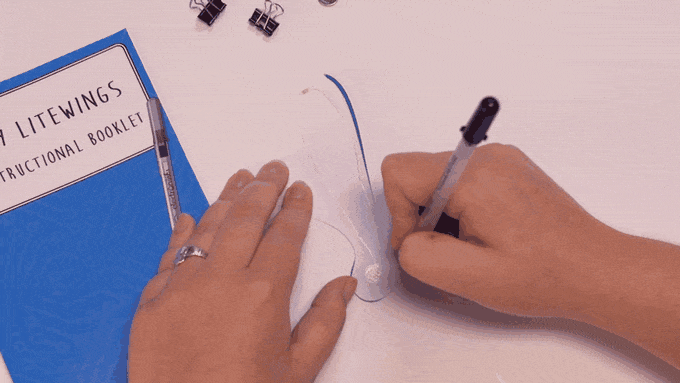When it comes to childhood education, technology has emerged as the modern equivalent of home economics. It’s a skill everyone should have, however for many parents it’s difficult to teach their children about the mechanics of electronics and engineering. To help simplify the education process, the makers of Circuit Scribe have created a conductive ink rollerball pen.
The pen features a non-toxic highly conductive silver and water based ink which enables users to draw their electric circuits by hand. The makers mention that the kit has been used for education, prototyping, and electronic art. Each Circuit Scribe kit comes with magnetic component modules that snap into the circuit, enabling users to create electronic paper crafts regardless of if the user’s familiarity with electronics. Rather than only offering massive kits with assorted components, the makers of Circuit Scribe also offer a line of specific purpose DIY kits.
The drone kit enables users to create a four-propeller drone using cardboard and the Circuit Scribe conductive ink pen. The drone packaging has perforated sections which can be punched for perfectly proportioned structures. After preparing the paper, users only need to draw the electrical connections, add the four propeller clamps, and attach the motor, to make a remote-control drone.

The calculator kit (designed by Dr. Saar Drimer of Boldport) enables users to design their own calculator keypad on paper. In addition to the calculator module and Circuit Scribe pen, the kit also includes a guidebook that teaches readers about touch sensors. There’s also a V2 of the calculator kit in the works which will be solar powered, and that will have a paperclip design, enabling it to move from notebook to planner, to desktop.
Finally, there’s the LiteWing kit which enables user creations to move using the maple seed as inspiration. The digital equivalent of the “helicopter seed” spins to the ground with a LED on its wing and coin cell battery on the weighted base. Once assembled, users can connect the battery to the LED and toss it in the air.

Each kit is fully inclusive – complete with the pen, appropriate modules, and supplies, plus an instructional guidebook. Users also can find detailed instructions and visual aids for brand new kits via the sketch section of the Circuit Scribe website.
The resistance of the conductive ink is 0.5 to 10 ohms for a 1cm line. However, this varies based on what paper users write on. Each pen has a shelf life of about a year, and the makers are optimizing the ink to make it last longer. Once open, the pen will write smoothly for at least six months. Each pen has enough ink to draw 60 to 80 meters (196 to 260 feet) of traces.
To date, the makers of Circuit Scribe have raised over $64,000 towards their goal of $95,000 via crowdfunding. Pricing for the kits starts at $8 for single devices, with more comprehensive offerings selling for $250 upwards. Estimated delivery for Circuit Scribe orders is October 2017.


